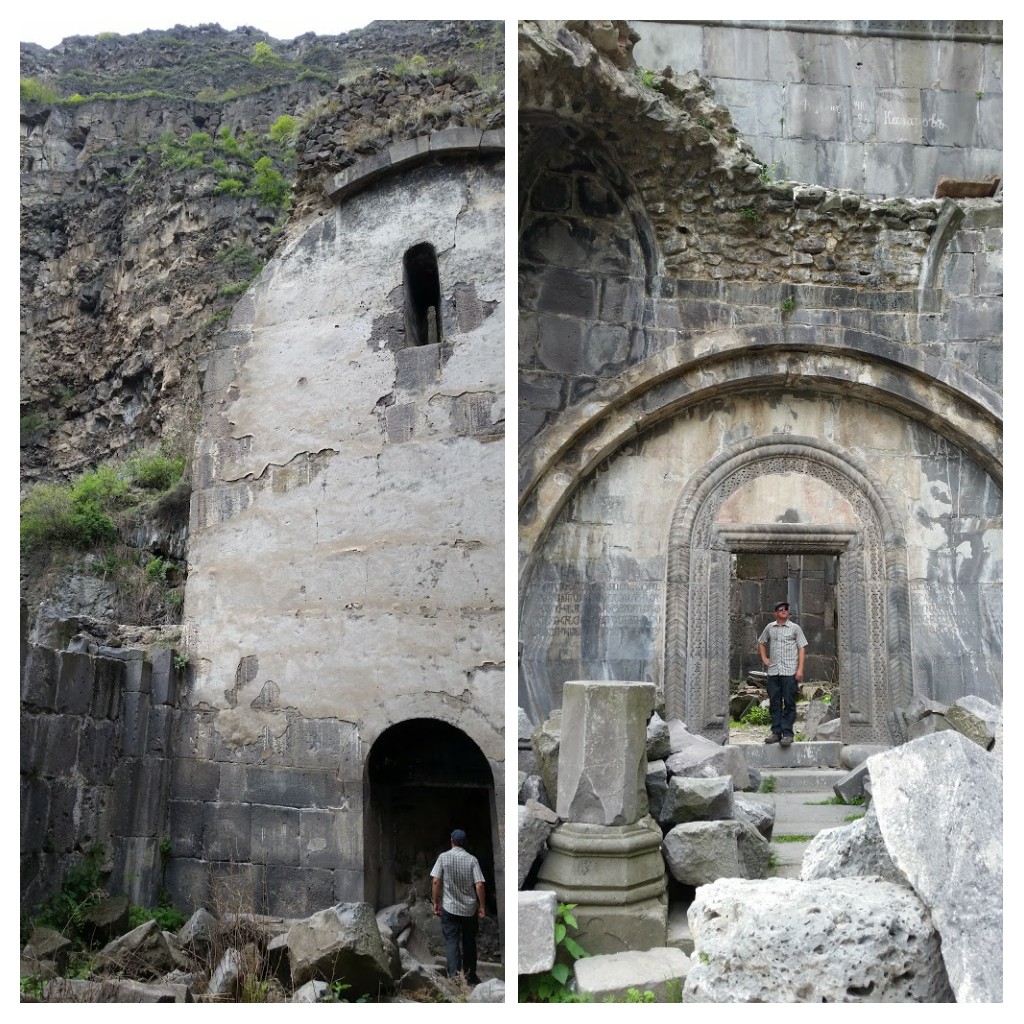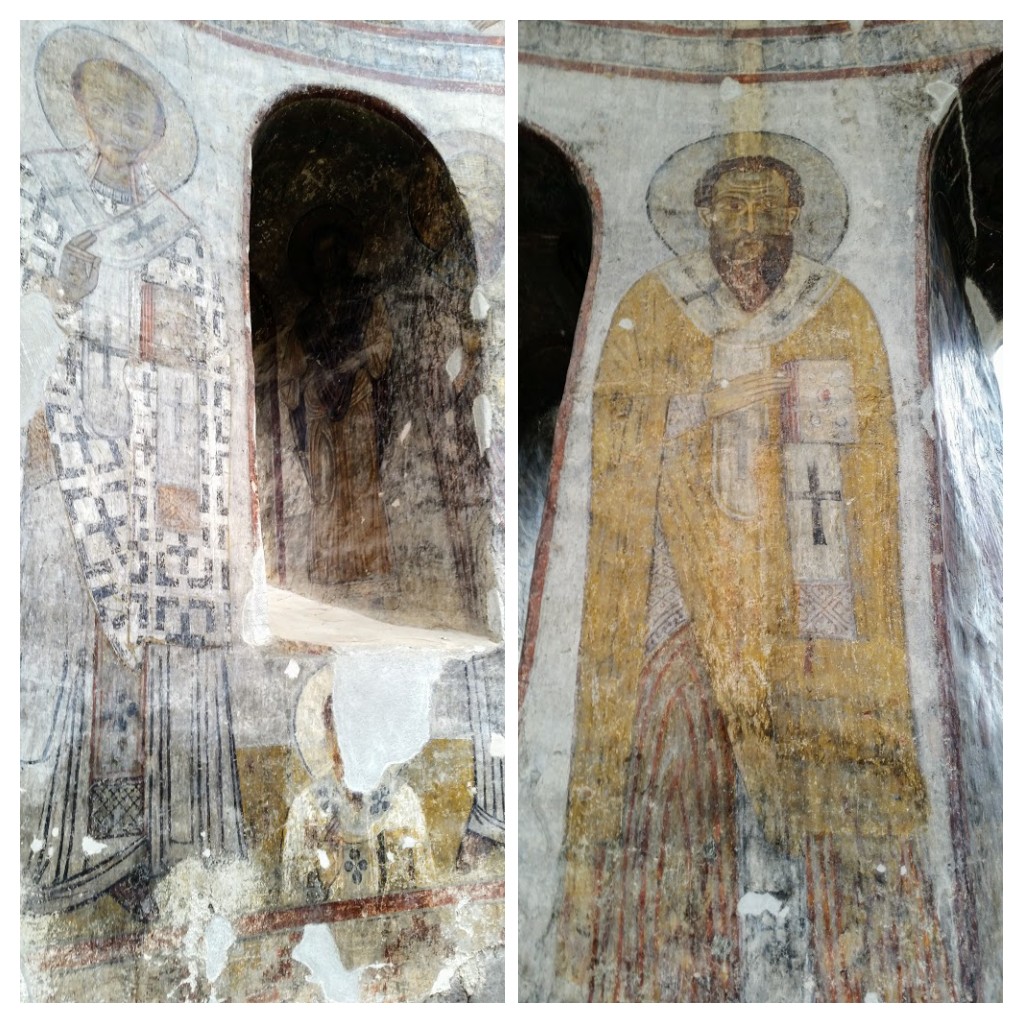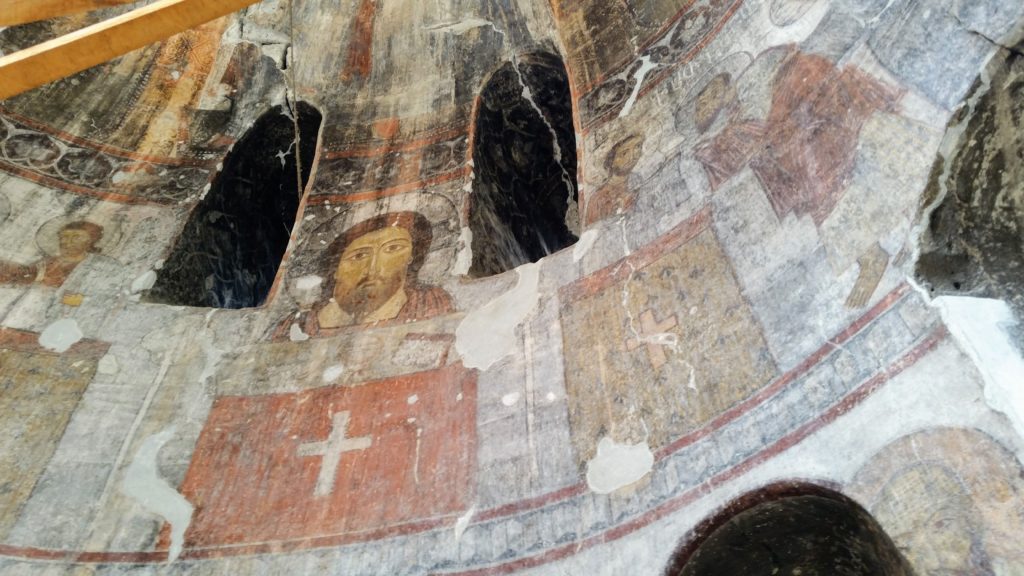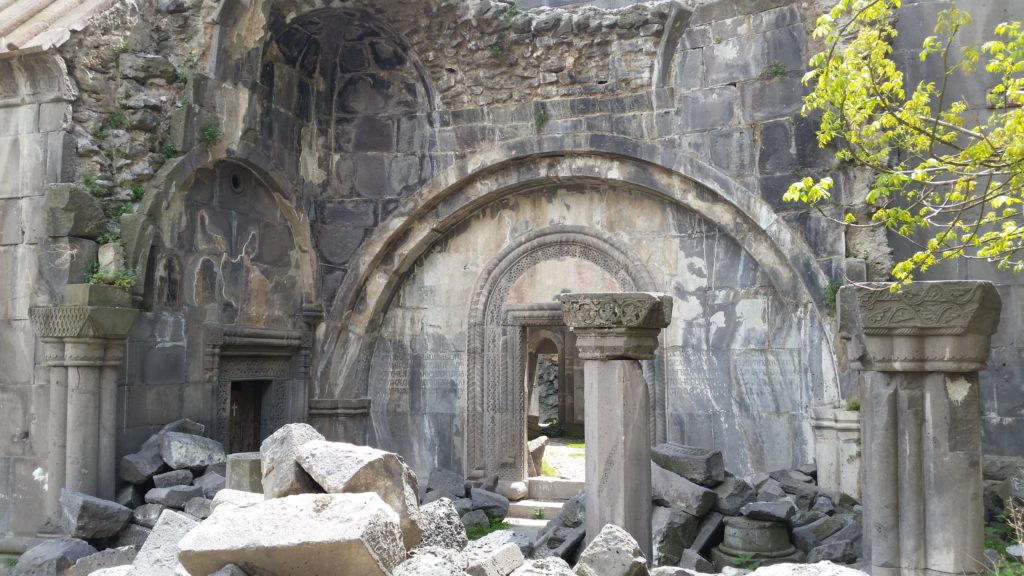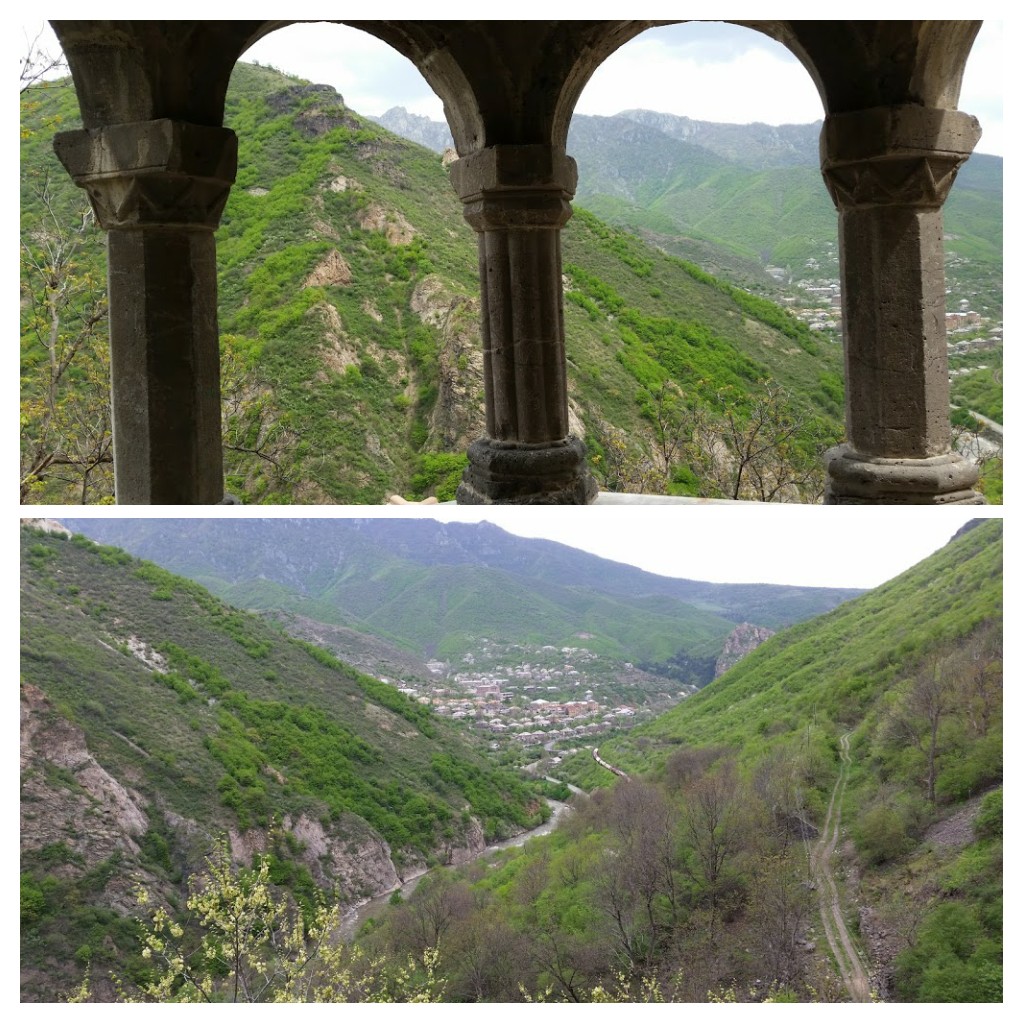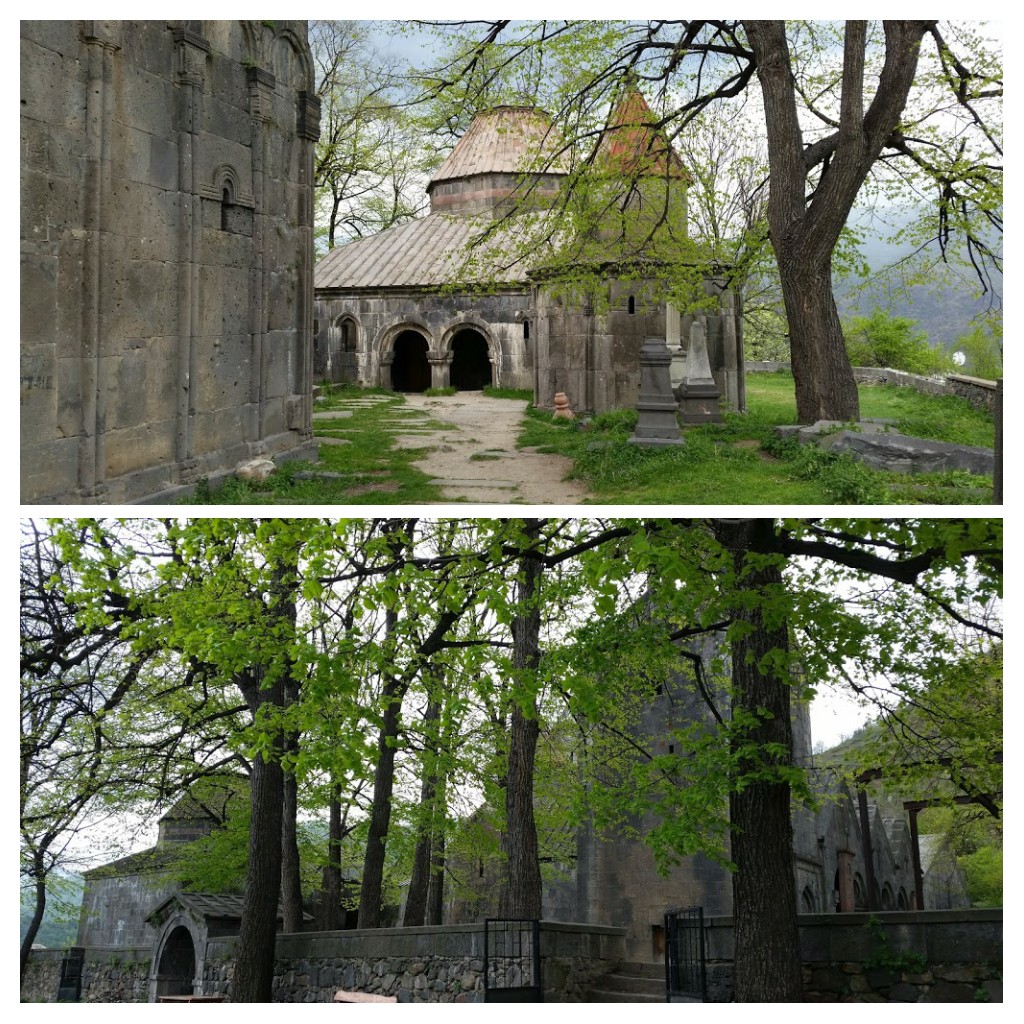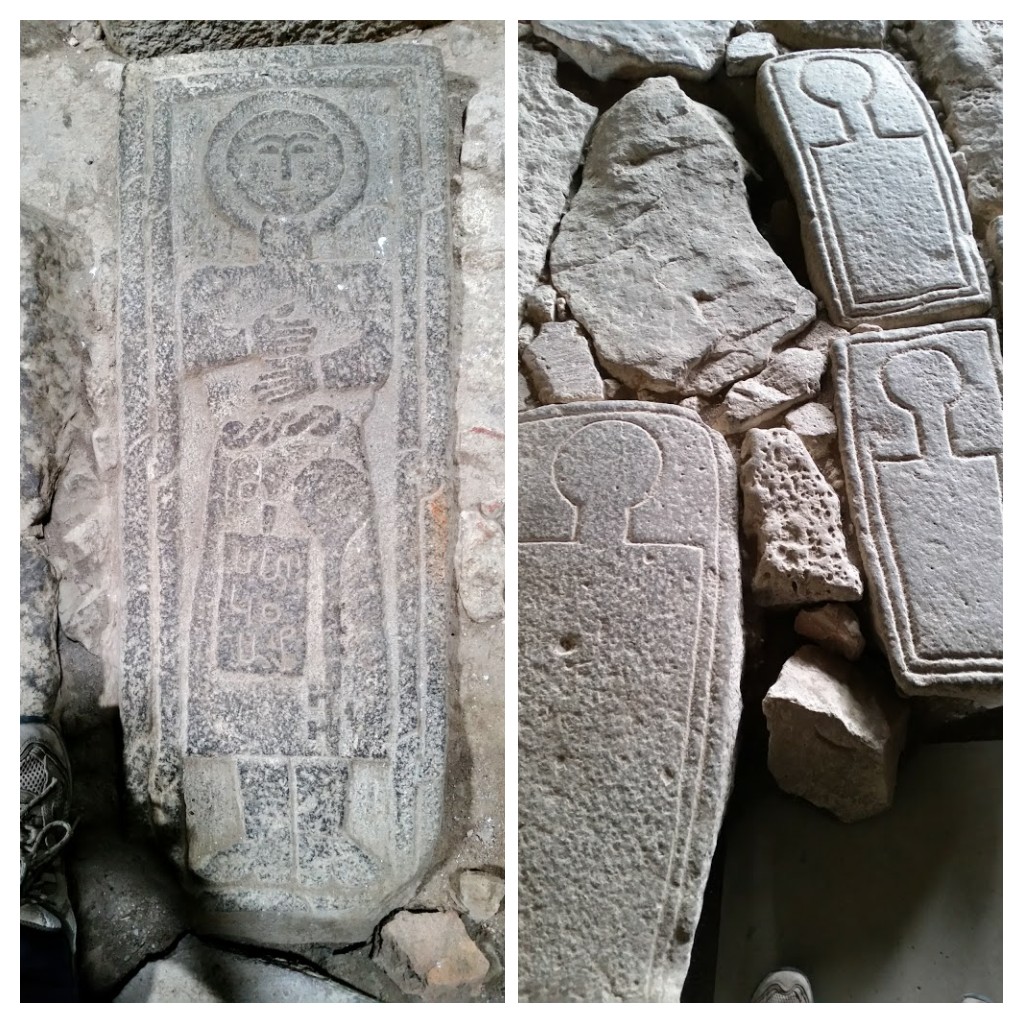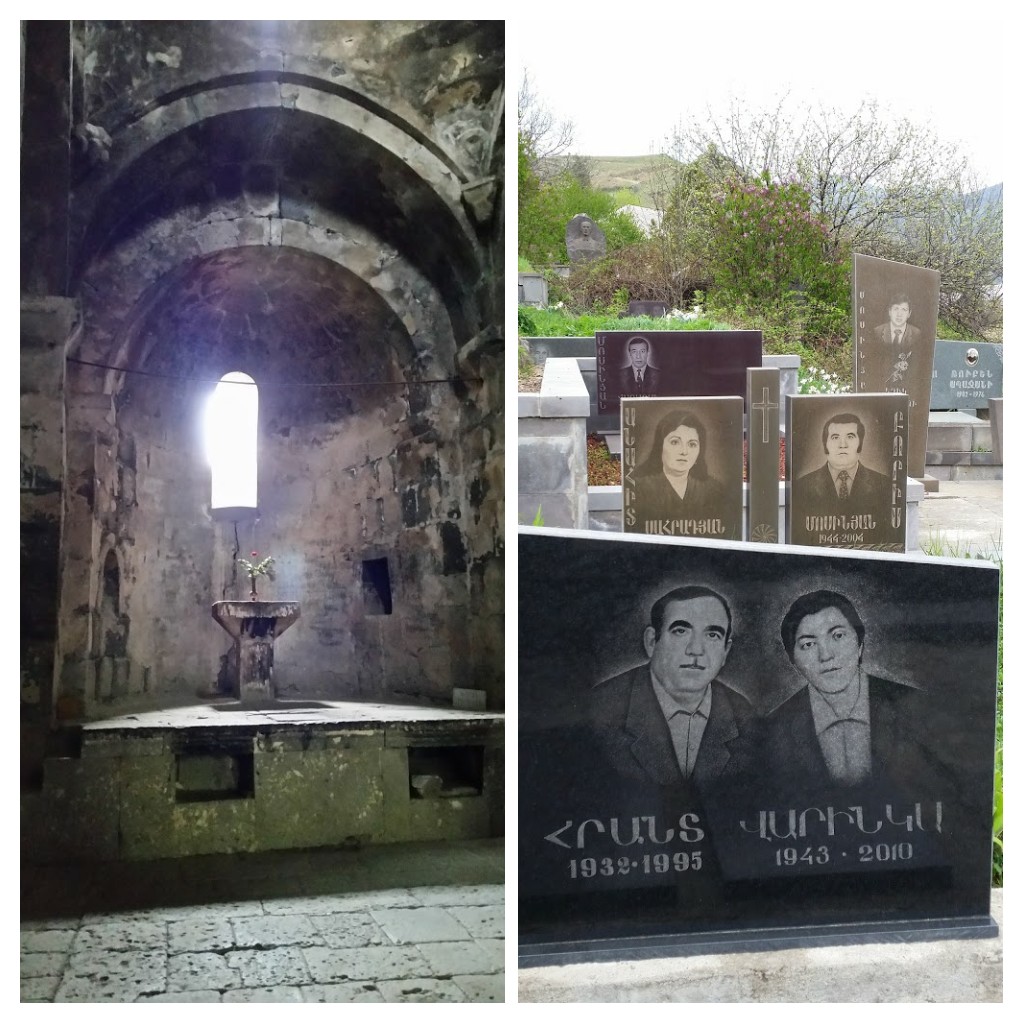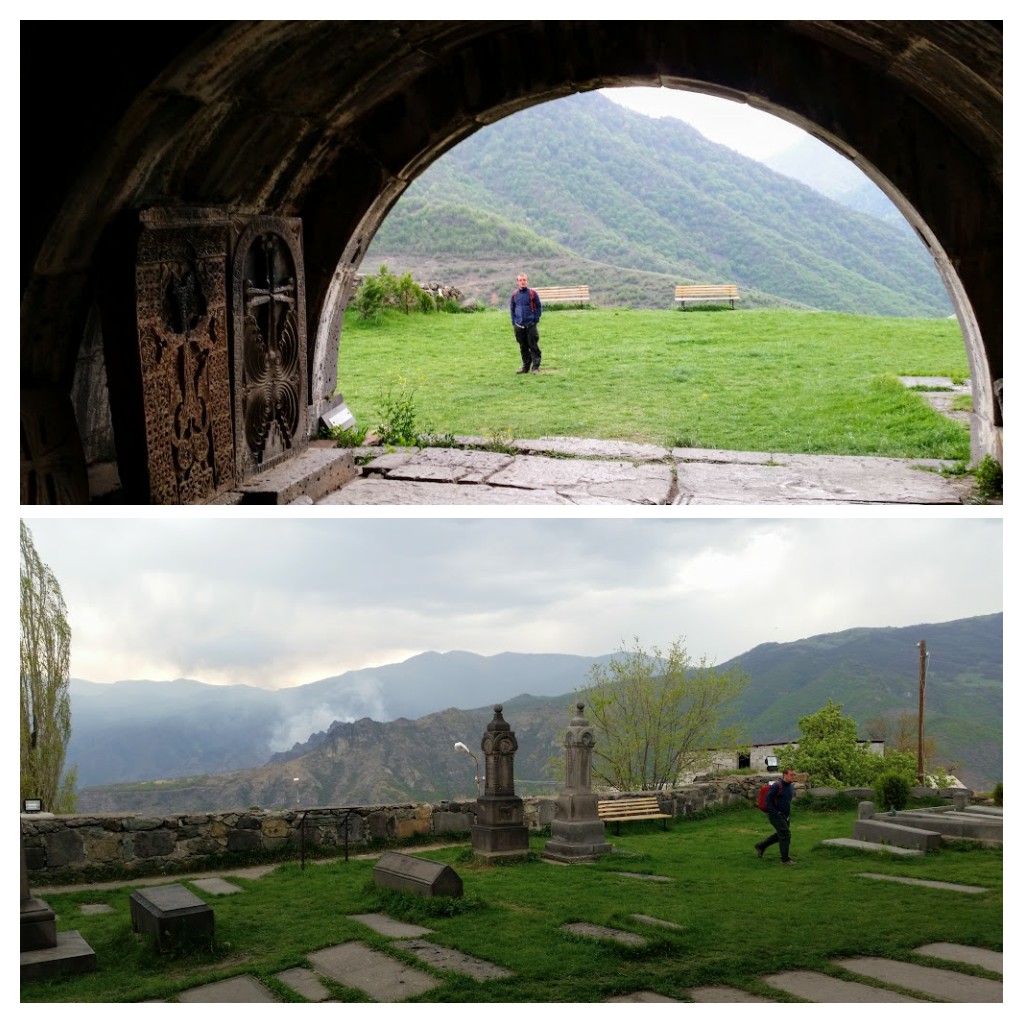We stayed in Vanadzor for two nights with a guy who is also involved in the ARK Armenia organisation we helped out with in Kapan. We arrived after our Lake Sevan trip and the following day we were off exploring again, this time hitch-hiking and on buses.
Our target was the dramatic and beautiful Debed Canyon and a few monasteries there. Our attempts at hitch-hiking out of town didn’t last long as a very crowded mini-van bus came along and we jumped in that. We got off at Kobayr and clambered up the hill past many farm animals until we got to what remains of the 12th century monastery.
At one end of the ruined church, the arches and what was likely the dome above the altar remained partially in tact. Frescoes here have been partially restored and were absolutely stunning, especially in contrast with the falling apart church ruins surrounding them. There were frescoes in the window arches, between the windows and a large one of Christ above the windows.
One of the chapels had a balcony above it and the views down the valley were just beautiful. After enjoying the views and admiring the location, we wandered back down to the main road along the river and hitch-hiked to our next stop.
The driver who picked us up was not afraid of speed nor overtaking others on this busy canyon road. After dropping his wife off at the hospital in Alaverdi where she worked, he drove us all the way up the hill to the Sanahin Monastery.
Sanahin is a UNESCO world heritage listed medieval monastery packed with ancient graves, dark chapels and medieval study halls. The oldest structure is the Astvatsatsin Church that dates back to 934 and one of the newest is the vestry (gavit) of this church from 1181. The gavit was my favourite part of the monastery, with the many arches and interesting slabs of carved stone on the ground.
The cemetery at the Sanahin complex contains a 12th-century mausoleum housing the Zakarian princes. But for us just as interesting were the more recent graves and how they all had photo like pictures of the person concerned on the grave.
Next up we headed to Haghpat Monastery, also a UNESCO world heritage listed site! We took a bus as far as we could then waited at the bottom of the hill hoping to catch a ride to the monastery. There was almost no traffic on the road so we weren’t in a particularly hopeful mood. But eventually a car came by and stopped to pick us up. There were already 4 people in the car but I sat on Antony’s knee and we made it up the hill. Thankfully it was a good car with a lot of power for the hills so it coped fine with the extra weight! The men in the car weren’t heading all the way to the monastery but kindly dropped us up there anyway. When we arrived there were a lot of cars tooting and a few people still milling round the car park after a wedding. No-one else seemed to be in the actual monastery, which is situated above a gorge and offered fantastic views, even on this somewhat cloudy day.
Haghpat was founded in 966 by Queen Khosrvanuch. The largest church, the Cathedral of Surp Nishan, was started in 976 and completed in 991. Its central dome rests on four imposing pillars, and despite a few minor restorations in the 11th and 12th centuries the church has retained its original character.
In the 12th and 13th centuries frescoes and the gavit for the Surp Nishan Church were added, along with the bell tower, library and chapter house. There are two 11th-century churches and a freestanding 13th-century gavit along with a number of khachakars on the site. The most famous khachkar is the ‘Amenaprkich’ (All Saviour) khachkar, standing since 1273. Its realistic depictions of Christ, the Virgin Mary, Mary Magdalene and the apostles were really revolutionary for its time (100 years before the Italian renaissance!).
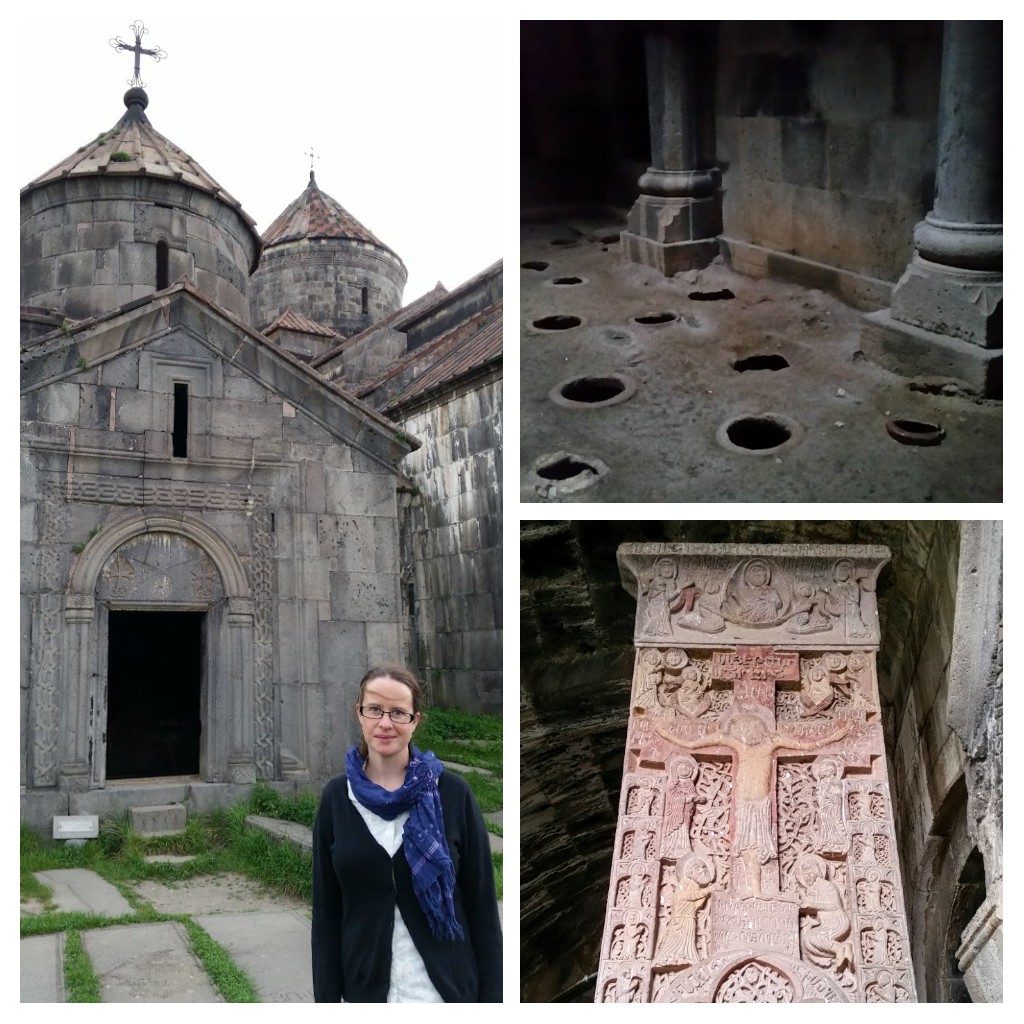
At Haghpat Monastery, Top right: Buried jars in the Book depository- used for storing dairy products and wine. Bottom right: The incredibly detailed ‘Amenaprkich’ (All-Saviour) khachkar, with its realistic depictions, from 1273.
From Haghpat we hoped to grab a ride with someone down to the town in the valley, from where we could get a bus back to Vanidzor. We got lucky though as a coca-cola regional manager picked us up and was headed all the way back to Vanidzor, so we had a very comfortable ride with him all the way home. The following day we left Armenia and headed over the border to Georgia.
